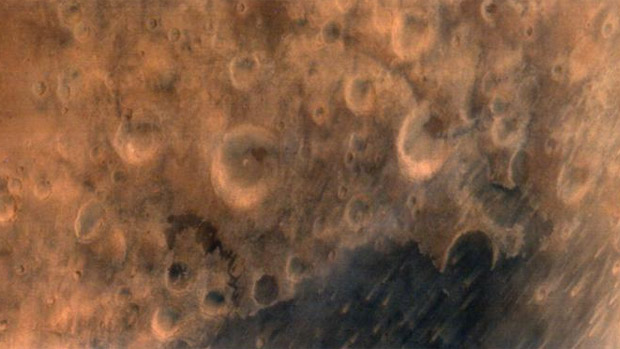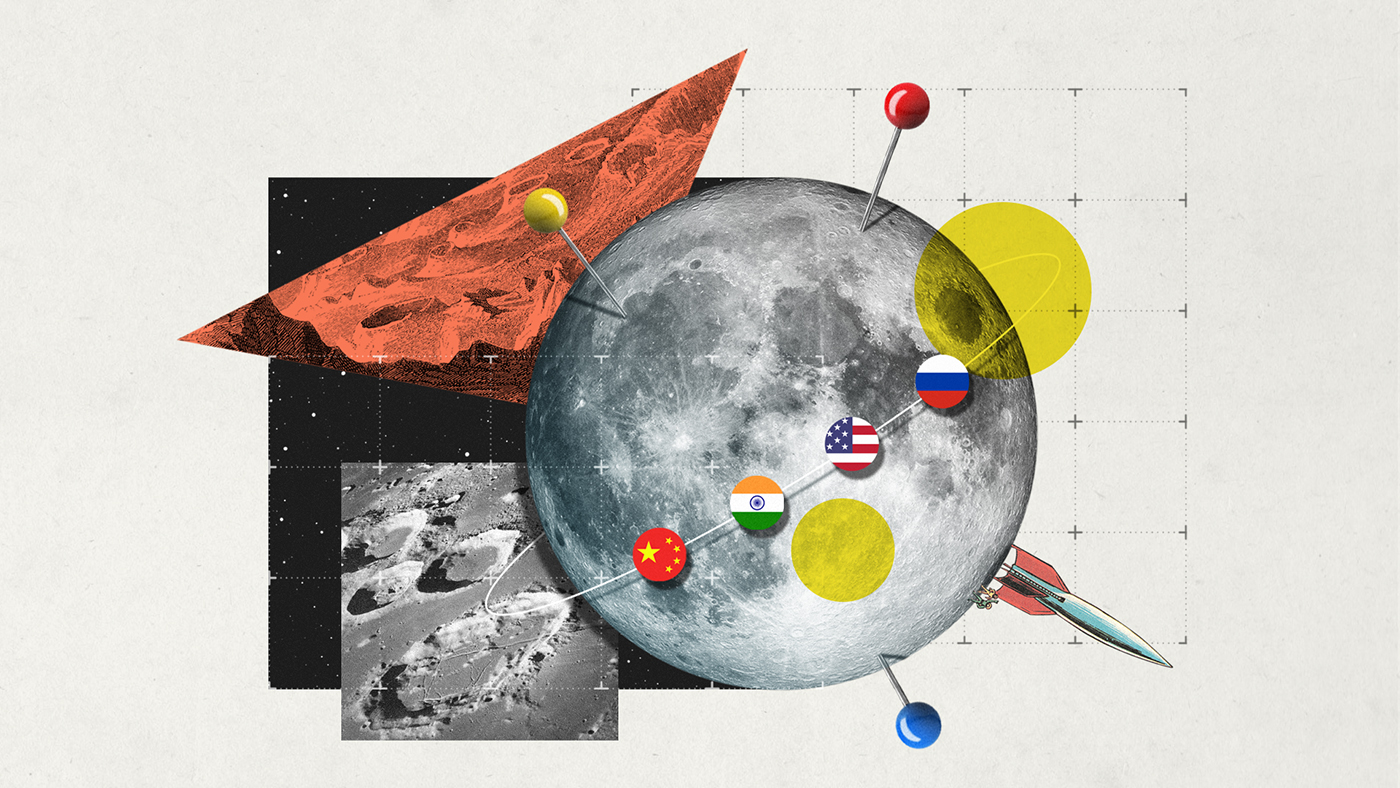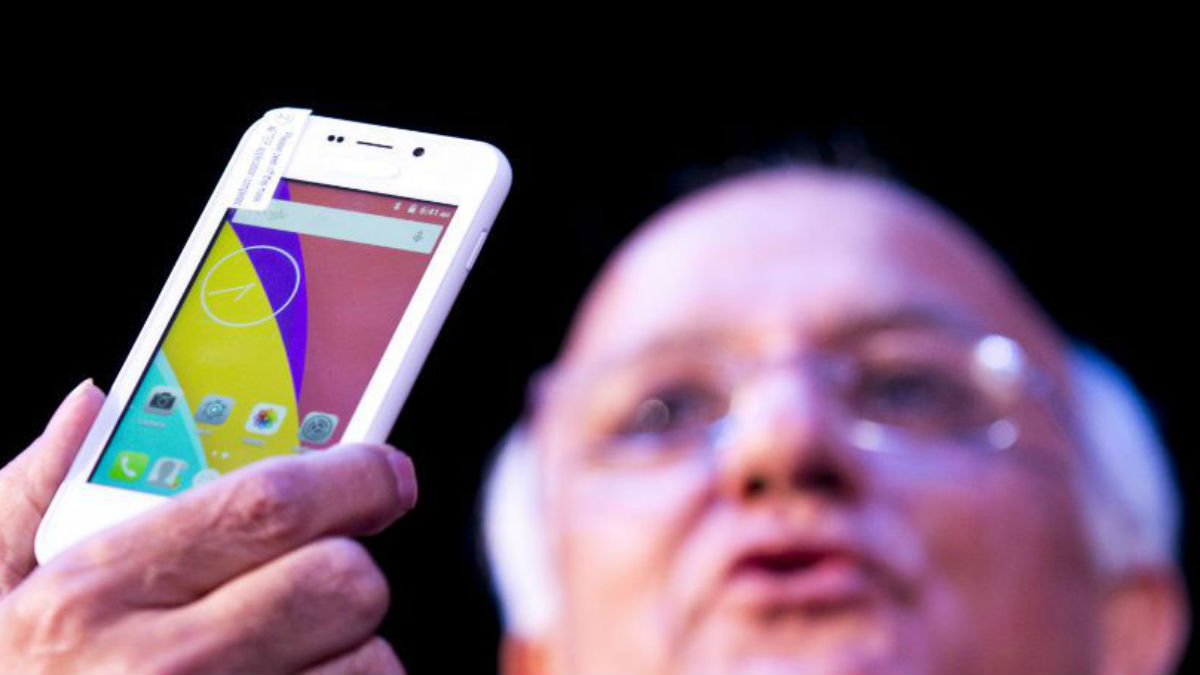India's Mars Orbiter sends first photos: what will Mangalyaan find?
India becomes fourth nation to celebrate reaching Mars – and the first to manage it on first attempt

India's Mars Orbiter Mission spacecraft has shared its first images of Mars after entering the red planet's orbit on its very first attempt.
The country's space agency became the fourth to successfully put a satellite in orbit around Mars – and the first to manage it on its first try. Prime Minister Narendra Modi called for a national day of celebration as it began circling Mars.
The Indian Space Research Organisation (ISRO) later uploaded a picture (above) of the planet on its Mars Orbiter twitter account with the caption: "The view is nice up here."
The Week
Escape your echo chamber. Get the facts behind the news, plus analysis from multiple perspectives.

Sign up for The Week's Free Newsletters
From our morning news briefing to a weekly Good News Newsletter, get the best of The Week delivered directly to your inbox.
From our morning news briefing to a weekly Good News Newsletter, get the best of The Week delivered directly to your inbox.
The image, which was taken from a height of 7,300km, was printed out and presented to Prime Minister Modi, who had previously joked that the mission's budget was lower than the sci-fi film Gravity, starring Sandra Bullock.
The Mars Orbiter Mission – known as Mangalyaanor or Mom – has been lauded for its relatively low price tag – just £45m, less than the cost of a Premier League footballer. The satellite will study the Martian atmosphere from orbit and will not land on the surface of the planet, says the Daily Telegraph.
The Mars Orbiter Mission joins the US's Maven satellite in orbit around Mars. Maven, which is also studying the atmosphere, reached the red planet on Monday. Nasa's Curiosity Rover is also in residence on the Martian surface – and still active.
Nasa's PR team greeted the fellow traveller with a tweet from Curiosity's 'personal' Twitter account.
A free daily email with the biggest news stories of the day – and the best features from TheWeek.com
Namaste, @MarsOrbiter! Congratulations to @ISRO and India's first interplanetary mission upon achieving Mars orbit.
— Curiosity Rover (@MarsCuriosity) September 24, 2014
ISRO replied in kind: "Howdy @MarsCuriosity? Keep in touch. I'll be around."
The BBC says there was an "atmosphere of excitement and tension" early on Wednesday at ISRO's mission centre in Bangalore where the scientists "many of them women and several of them young" were tracking the craft.
The first breakthrough was when the satellite fired up its liquid engine to start entering orbit. There followed an "agonising" 20 minutes when Mangalyaan passed behind Mars and was therefore out of radio contact.
When it returned and was confirmed to have begun an elliptical orbit around the planet, "the scientists all rose as one, cheered, clapped, hugged each other and exchanged high fives".
With the odds "stacked against us," said Modi, "we have navigated our craft through a route known to very few". He added that just as the nation celebrates its cricketing victories, so it should celebrate this "historic occasion".
Only the US, Russia and Europe have successfully sent missions to Mars. Japan and China have attempted to do so but failed.
Here are five key questions about the historic mission:
Why is it so significant?
India's space programme began 44 years ago, but this is the first time it has sent a mission "to study a celestial body outside Earth's sphere of influence", explains the Times of India. In reaching the red planet, India's space agency becomes the fourth in the world after those of the US, Russia and Europe to undertake a successful Mars mission. Some observers are viewing Mom "as the latest salvo in a burgeoning space race between the Asian powers of India, China, Japan, South Korea and others", says the BBC.
What exactly is the Mars Orbiter?
The Orbiter, which is also known by the informal name of Mangalyaan (Mars-craft), is a 1,337 kilogram satellite "about the size of a small car", says Indian website Zee News. The Mom carries five scientific instruments weighing about 15 kilograms. They include a sensor that will measure the levels of methane in the Martian atmosphere, a colour camera and a thermal infrared imaging spectrometer to gauge the temperature of the planet's surface.
How long did it take to reach Mars?
The Mom has completed a 300-day marathon to make the 200-million-kilometre journey to Mars. That included the 20-25 days it spent in the Earth's orbit "building up the necessary velocity to break free from our planet's gravitational pull", explains Zee.
What scientific evidence is the MOM hoping to collect?
The search for methane in the Martian atmosphere is probably the most significant part of the Mom mission. Martian methane has been detected by sensors on Earth, but NASA's robotic rover Curiosity has failed to find the gas during its time on the planet. The Indian spacecraft will also examine the rate of loss of atmospheric gases to outer space, says the BBC. "This could provide insights into the planet's history; billions of years ago, the envelope of gases around Mars is thought to have been more substantial."
How much has the mission cost?
The Mom, which is seen as a demonstration of India's low-cost space technology, is costing an estimated £45m. That's "a fraction of foreign equivalents", says Zee. But the budget price hasn't stopped critics asking if a country with "one of the highest rankings for childhood malnutrition in the world" should be involved in the space race, says the BBC. Others question the scientific purpose of the mission. A spokesman for the Delhi Science Forum, said: "This is a highly suboptimal mission with limited scientific objectives". Meanwhile, the economist-activist Jean Dreze, said the mission "seems to be part of the Indian elite's delusional quest for superpower status".
-
 ‘Lumpy skin’ protests intensify across France as farmers fight cull
‘Lumpy skin’ protests intensify across France as farmers fight cullIN THE SPOTLIGHT A bovine outbreak coupled with ongoing governmental frustrations is causing major problems for French civil society
-
 The best books of 2025
The best books of 2025The Week Recommends A deep dive into the site of a mass shooting, a new release from the author of ‘Atonement’ and more
-
 Inside Minnesota’s extensive fraud schemes
Inside Minnesota’s extensive fraud schemesThe Explainer The fraud allegedly goes back to the Covid-19 pandemic
-
 Dark side of the Moon: will the race to lunar South Pole spark conflict?
Dark side of the Moon: will the race to lunar South Pole spark conflict?Today's Big Question Russia and India are competing for the ‘new lunar gold’ – but real contest will be between the US and China
-
 What will happen in 2023? Predictions and events for the year
What will happen in 2023? Predictions and events for the yearIn Depth The new year brings the potential for peace in Ukraine, rolling recessions and the return of a beloved singing contest to the UK
-
 Freedom 251: world's cheapest smartphone launched in India
Freedom 251: world's cheapest smartphone launched in IndiaIn Depth Freedom 251 goes on sale for the same price as a cup of coffee, but some are sceptical about its claims